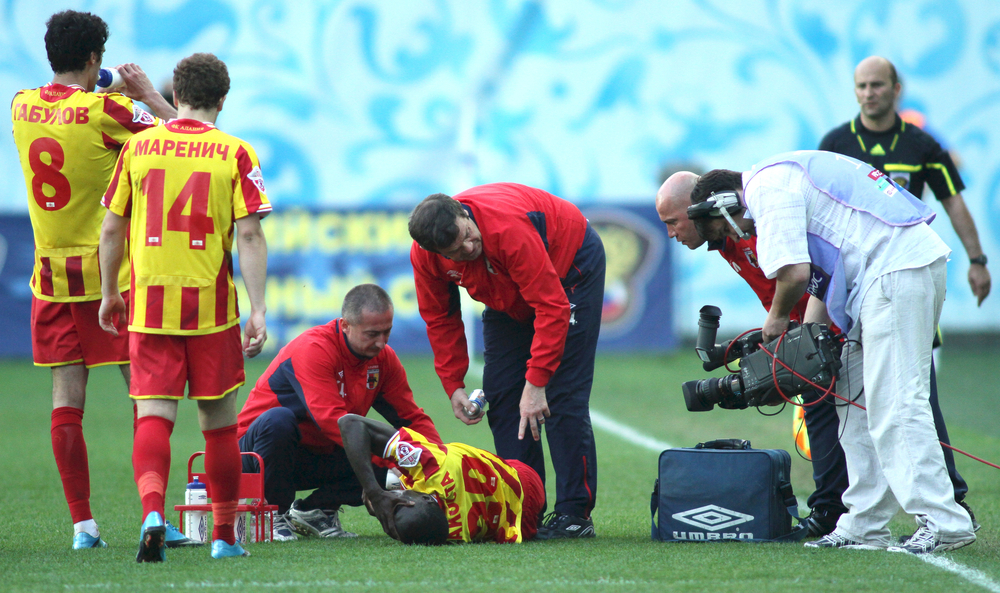Fun facts regarding return to play and future ligament injury risk in soccer athletes
Posted on 10th February 2014 by Travis Gerrald

Brophy RH, Schmitz L, Wright RW, et al. Return to play and future ACL injury risk after ACL reconstruction in soccer athletes from the Multicenter Orthopaedic Outcomes Network (MOON) group. Am J Sports Med. 2012;40(11):2517-22.
Introduction
Having grown up playing soccer, I have experienced several friends who have suffered at least one ACL (anterior cruciate ligament) injury. Fortunately, for me, I have been able to avoid this injury which carries along with it quite the lengthy recovery (about 10 months). Unfortunately, for me, I am incredibly injury-prone so my ever-evolving compensation patterns may catch up to me and ultimately, my ACL. The typical mechanism of injury for the ACL is a quick internal rotation of the femur (upper leg), external rotation of the tibia (lower leg), and a valgus (towards the opposite leg) force at the knee. The mechanism is most often replicated when cutting, stopping quickly, or landing and changing directions quickly. In addition, I have friends who tore their ACL from simply stepping backwards and placing their foot down on an uneven surface so there are many different ways it can occur.
Purpose
The purpose of this post is not just to give information about how injury-prone I am or how one may tear their ACL, but to give statistics about the demographics of soccer players across the US, their ACL injury, and addition information regarding return to sport. The MOON Group put their hypothesis to the test that player sex, injured leg, and graft choice do not influence return to play and also to define the risk for future injury of the ACL in soccer players after having their ACL repaired.
Methods
100 soccer players (55 male, 45 female) age 11-53 years old were recruited based on standard surveys filled out prior to surgery. The MOON group then had these 100 soccer players answer a structured series of questions about their participation in soccer at the time of their injury and since their injury. The data collected in these questions related to preferred kicking leg, current level of play, level of play prior to injury, reasons for not returning to play, and if they has a second reconstructive surgery. The answers to these variables were all then placed into a fancy multi-variable regression model with various dependent and independent variable plugged in and the following are the results.
Results:
Ready for some statistics? Here goes.
72% of the 100 soccer athletes returned to playing soccer initially. After seven years, only 36% of these athletes were still playing soccer. There was no difference between the time to return to play in males vs. females. It was also determined after the analysis that females and older athletes were less likely to return to playing soccer. Of the 100 participants, 12 athletes re-injured their knee and underwent another ACL surgery. 9 required surgery on the opposite leg while 3 re-injured the same leg. Of these 12 athletes, it was determined that females are more likely to require a second surgery. Also, if the non-dominate leg was injured initially, it was more common to injury the dominant leg in the future.
Conclusion
Ultimately, it was determined that if you are a young male, you are more likely to return to sport than if you are an older female.
Strengths and weaknesses
The article does a great job of delivering a lot of information about return to play in soccer players after an ACL reconstructive surgery. The sample size was large which gives adequate validity to the study. The follow-up of 7 years was also a good way to determine re-injury rates of the ACL; however, the 7 year follow-up also leads me to the weaknesses of this study. The study did not control for how many people would naturally stop playing soccer due to reasons other than their ACL reconstruction. The study also interpreted data on the risk of re-injury based off of the 12 athletes who did indeed require another ACL surgery. Further research is needed to determine the validity of the results interpreted based off of 12 re-injuries.
Clinical application
As far as application to both the clinician and the athlete go, it is important to note that ACL prevention programs are out there. Female athletes may benefit the most from these programs since they may be at a higher risk of sustaining 1 or more ACL injuries. Also, if future studies do validate the hypothesis that injuring the non-dominant ACL puts you at an increased risk of injuring the dominant ACL in the future then ACL prevention programs may be even more useful.



